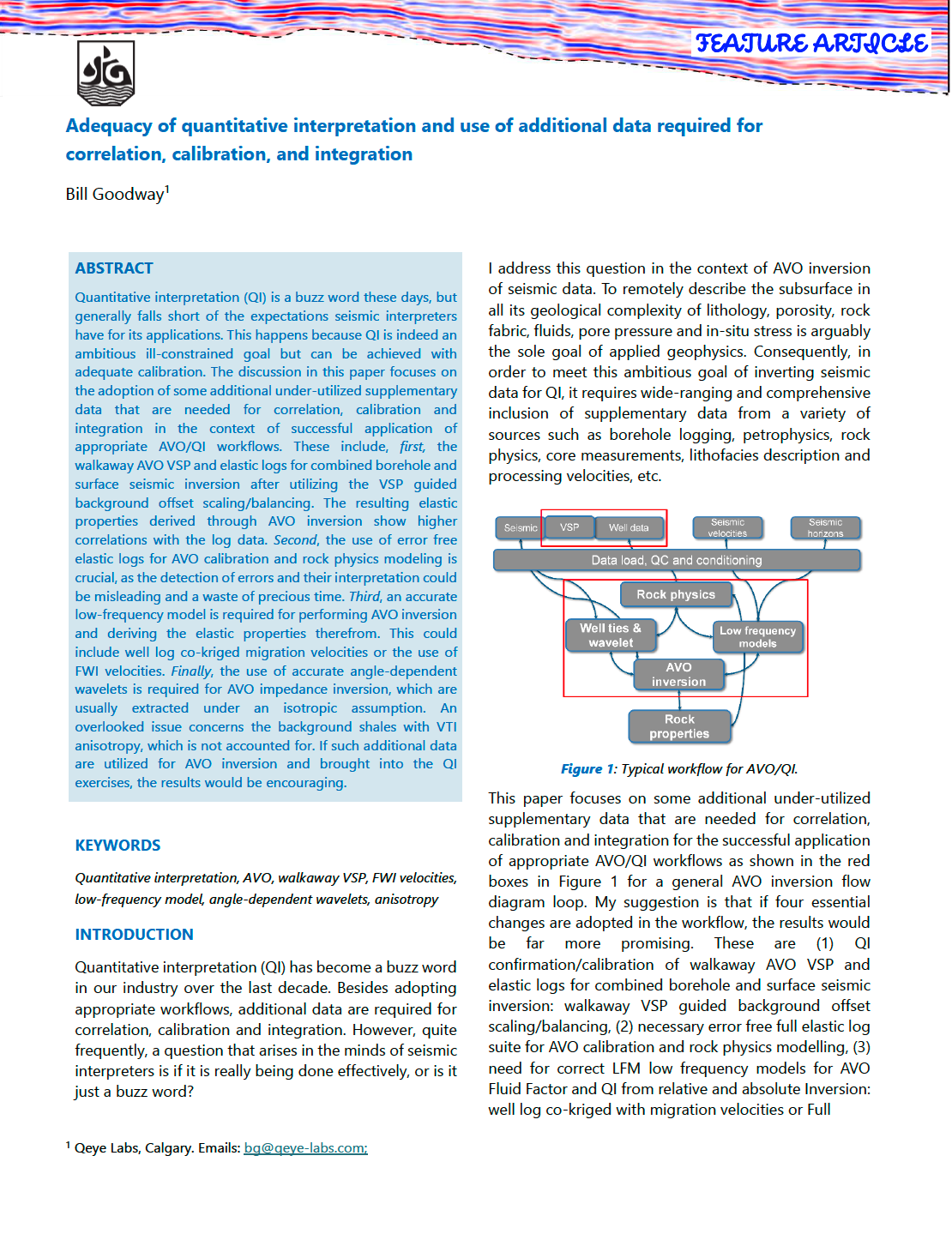SPG Geohorizons: Adequacy of quantitative interpretation and use of additional data required for correlation, calibration, and integration
Quantitative interpretation (QI) is a buzz word these days, but generally falls short of the expectations seismic interpreters have for its applications. This happens because QI is indeed an ambitious ill-constrained goal but can be achieved with adequate calibration. The discussion in this paper focuses on the adoption of some additional under-utilized supplementary data that are needed for correlation, calibration and integration in the context of successful application of appropriate AVO/QI workflows. These include, first, the walkaway AVO VSP and elastic logs for combined borehole and surface seismic inversion after utilizing the VSP guided background offset scaling/balancing. The resulting elastic properties derived through AVO inversion show higher correlations with the log data. Second, the use of error free elastic logs for AVO calibration and rock physics modeling is crucial, as the detection of errors and their interpretation could be misleading and a waste of precious time. Third, an accurate low-frequency model is required for performing AVO inversion and deriving the elastic properties therefrom. This could include well log co-kriged migration velocities or the use of FWI velocities. Finally, the use of accurate angle-dependent wavelets is required for AVO impedance inversion, which are usually extracted under an isotropic assumption. An overlooked issue concerns the background shales with VTI anisotropy, which is not accounted for. If such additional data are utilized for AVO inversion and brought into the QI exercises, the results would be encouraging.

